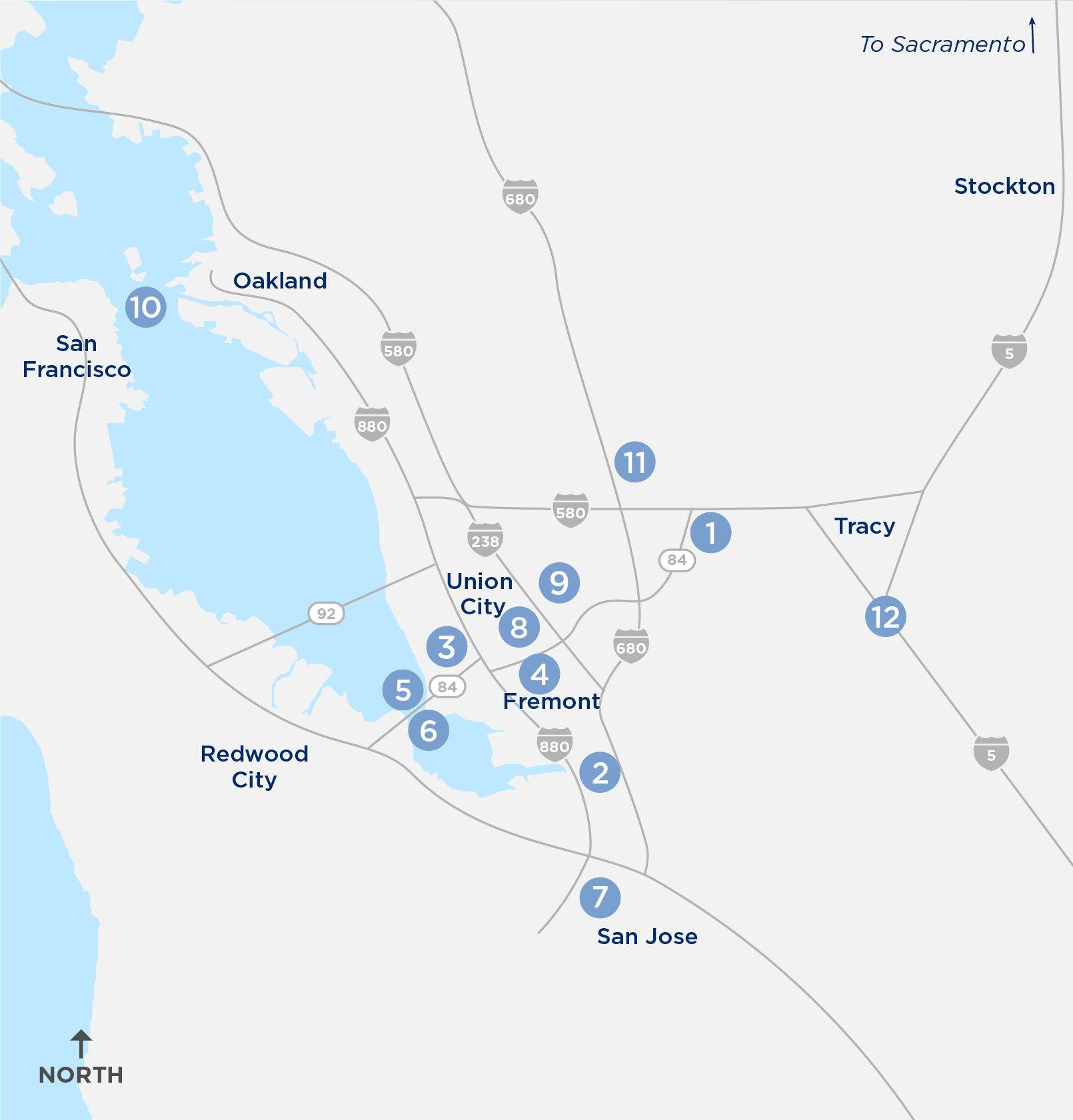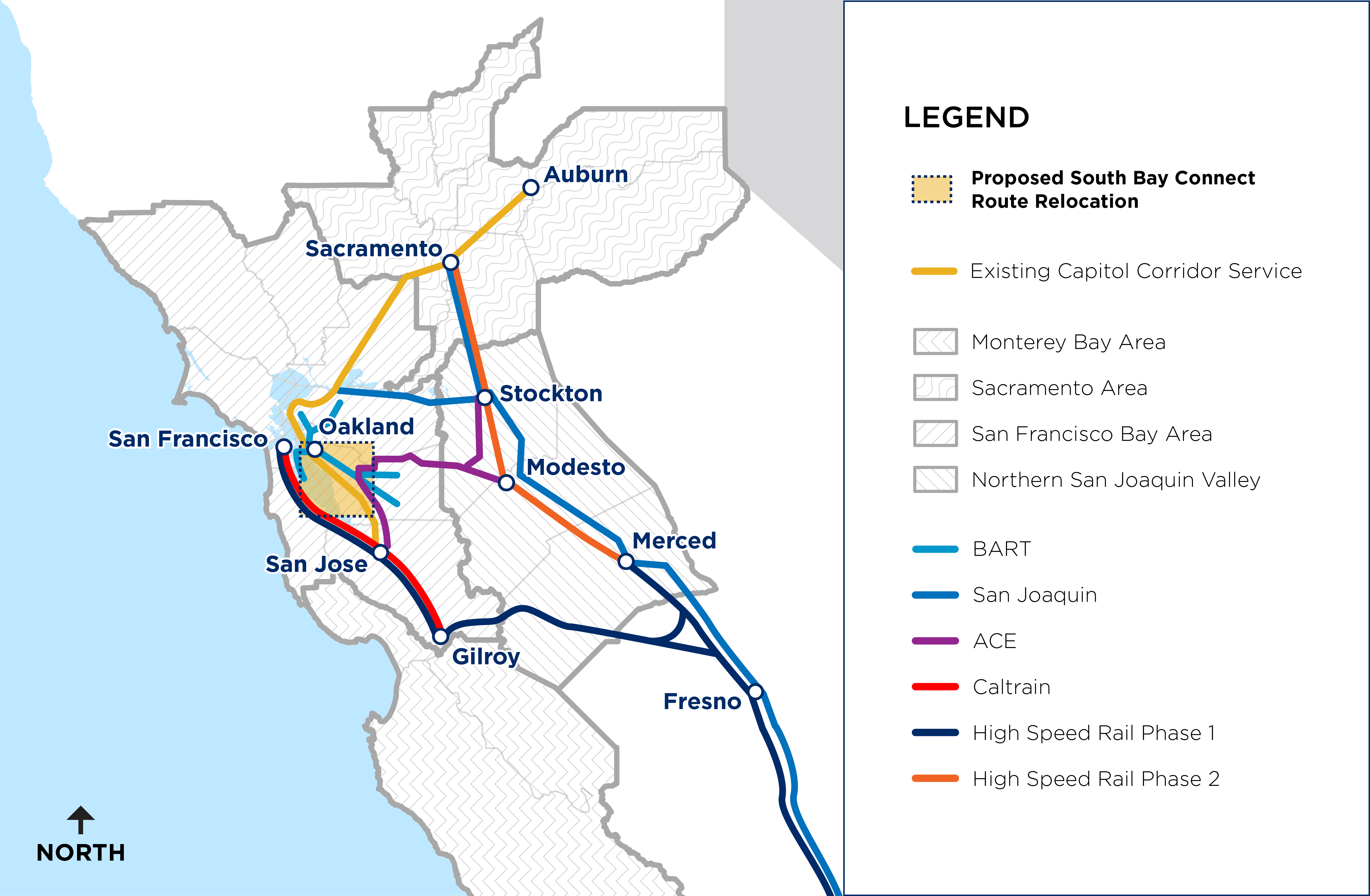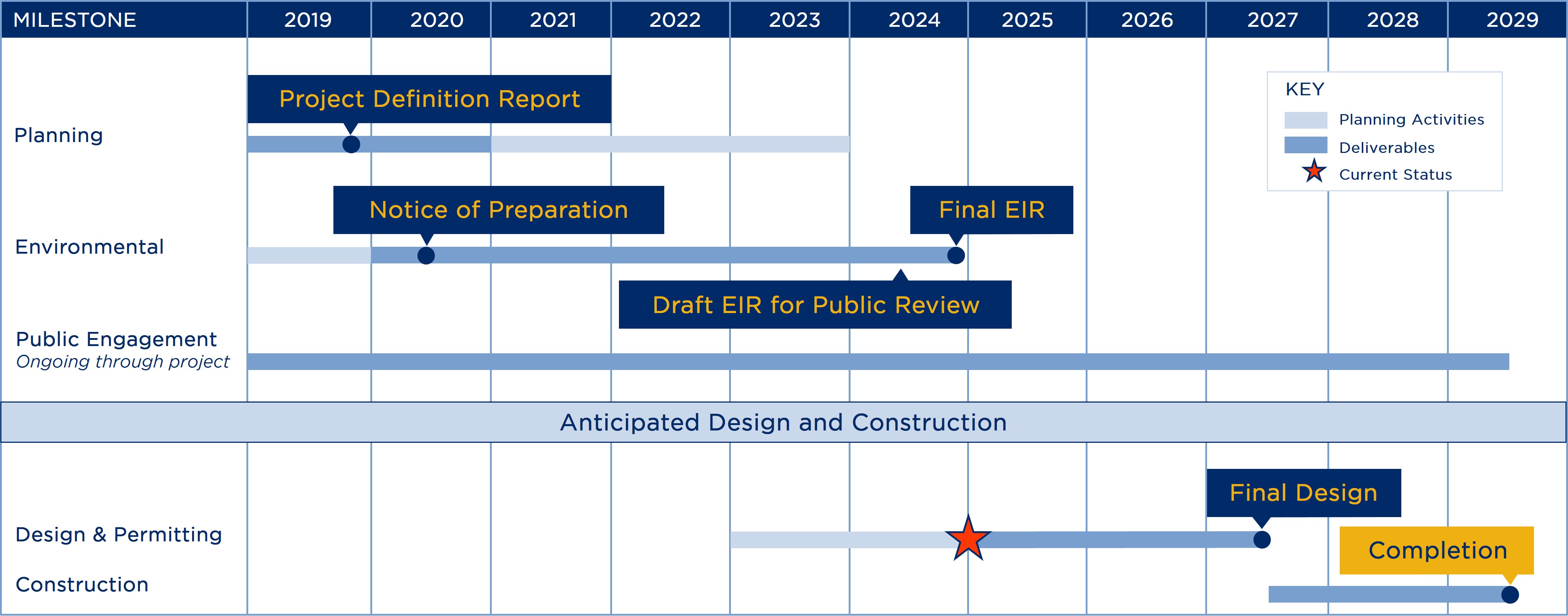Project History
Capitol Corridor first identified the South Bay Connect route relocation in their 2014 Vision Plan as one of many other projects to improve operational efficiency, rider experience, and offer opportunity to expand future service to underserved markets. Since that time, the Project has continued to be identified as an important transportation improvement for our region and included in several freight and passenger rail plans including the California State Rail Plan update. Project funding was secured in 2018 to move from Visioning into Project Development.
Regional Projects
SBC is one of many East Bay transportation planning efforts being driven by multiple partner agencies all working collaboratively towards a common goal: To provide efficient and multi-modal travel options for our diverse region offering access and connection to jobs, education, medical, and more.
 1
2
3
4
5
6
7
8
9
10
11
12
1
2
3
4
5
6
7
8
9
10
11
12
ACE Vision Plan San Joaquin Valley - Bay Area
VTA – BART to San Jose Phase II extension to downtown San Jose
City of Fremont TOD Overlay – Ardenwood Satellite campus for high-tech companies near rail/bus connections
City of Fremont Centerville Station TOD Planned development with multi-modal access
MTC – Dumbarton Forward Initiative Early planning to address congestion
SamTrans – Dumbarton Rail Corridor Strategic plan to identify rail options for Dumbarton Bridge
City of San Jose – Diridon Station TOD Planning to expand and accommodate multi-modal travel
City of Union City – BART Intermodal Station Regional rail hr-blue
MTC – SoCo Rail Strategies Assesses passenger and rail needs in southern Alameda County, including potential East Bay hubs
BART – LINK21 Transbay Rail Crossing Early planning for large Megaregional Program
SJV Regional Rail Authority – Valley Link New rail expansion connection between BART Station in Dublin to ACE Station in North Lathrop
ACE – Valley Rail Service Plan ACE rail expansion south to Merced and two additional round trips to Sacramento for San Joaquin
TOD –Transit-Oriented Development
ACE –Altamont Corridor Express
SamTrans –San Mateo Transit District
VTA –Valley Transportation Authority
MTC –Metropolitan Transportation Commission
SJV –San Joaquin Valley
Mobility within Northern California’s Megaregion
Today there are 12.2 million people living in the 21-County Northern California Megaregion. By 2050, there will likely be more than 15 million residents in the Megaregion. Capitol Corridor’s intercity rail service links directly to several regional rail and transit services throughout the Megaregion. The challenge to provide efficient travel options and improve rail mobility to keep freight goods moving through rail can be addressed by creating an integrated transportation network—South Bay Connect is part of the solution.

Rail Infrastructure
Today, there is a busy and complicated rail system used by freight and passenger rail services that leads to at-grade crossing traffic back-ups as well as operational inefficiencies for both passenger and freight rail services.
- UP uses the Niles Subdivision, the Coast Subdivision, and Centerville Lines to move goods from the Port of Oakland to San Jose and the Central Valley.
- Passenger trains like Amtrak Coast Starlight runs two trains down the Coast Subdivision, and the Altamont Corridor Express runs eight trains daily between the Central Valley and San Jose.
- Finally, Capitol Corridor runs 14 trains daily down the Niles Subdivision, across the Centerville line and then down the Coast Subdivision to San Jose.
South Bay Connect proposed route relocation from the Niles Subdivision to the Coast Subdivision will reduce rail congestion and facilitate the separation of freight and passenger rail services on busy corridors.
Potential Rail Infrastructure Upgrades
CCJPA is working closely with UP to identify railroad improvements on the Coast, Niles, and Oakland Subdivision lines to meet the Federal Railroad Administration's Class 5 standards and establish a new rail connection in the Shinn area respectively. Additional rail improvements may include:
- Rail track and rail tie replacements
- Installation of new signal technology
- Right-of-way safety and security modifications such as fencing
- New sidings or passing tracks to reduce train idling
- At-grade crossing safety improvements
Project Milestones
Key planning and environmental milestones have been identified and represent opportunities for public engagement to share information and seek valuable input to address any environmenal impacts that may affect the community.

